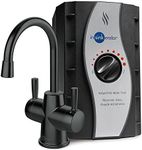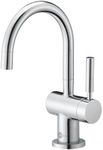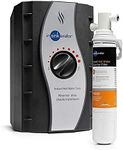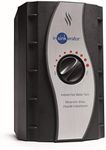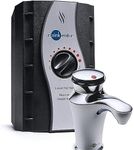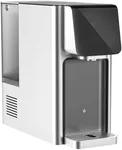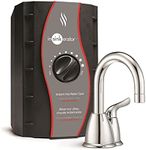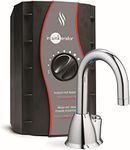Buying Guide for the Best Hot Water Dispensers
Choosing a hot water dispenser can make your daily routine much easier, whether you need hot water for tea, coffee, instant meals, or other uses. The right dispenser should match your household size, usage habits, and preferences for convenience and safety. Before buying, think about how often you'll use it, how much water you typically need at once, and where you'll place it in your kitchen or workspace.CapacityCapacity refers to how much water the dispenser can hold at one time. This is important because it determines how often you'll need to refill it. Small capacities (around 1-2 liters) are suitable for individuals or small households who only need a few cups at a time. Medium capacities (2-4 liters) work well for families or shared spaces. Large capacities (over 4 liters) are best for offices or frequent use. Choose a size that matches your daily needs so you don’t have to refill too often or end up with stale water.
Heating SpeedHeating speed is how quickly the dispenser can bring water to the desired temperature. This matters if you want hot water on demand without waiting. Some dispensers heat water instantly, while others may take several minutes. If you’re often in a hurry or need hot water throughout the day, look for faster heating times. If you don’t mind waiting a bit, a slower model may be fine.
Temperature ControlTemperature control allows you to select or adjust the water temperature. This is important if you use hot water for different drinks or foods that require specific temperatures. Some dispensers offer fixed temperatures, while others let you choose from several settings or even set an exact temperature. If you enjoy a variety of hot beverages or need precise temperatures, look for adjustable controls. If you only need boiling water, a basic model will suffice.
Dispensing MethodThe dispensing method is how you get water out of the machine. Common options include push-button, lever, or touchless sensors. Push-button and lever types are simple and reliable, while touchless models are more hygienic and convenient, especially in shared spaces. Consider who will use the dispenser—if you have children or elderly users, choose a method that’s easy and safe for them.
Safety FeaturesSafety features help prevent accidents like burns or spills. Look for features such as child locks, automatic shut-off, and cool-touch exteriors. These are especially important if you have kids or pets at home, or if the dispenser will be used in a busy environment. Choose a model with the right safety features for your household’s needs.
Ease of CleaningEase of cleaning refers to how simple it is to keep the dispenser hygienic. Some models have removable drip trays, wide openings, or parts that are dishwasher-safe. Regular cleaning prevents limescale buildup and keeps your water tasting fresh. If you want low maintenance, look for a design that’s easy to take apart and clean.
Size and PlacementSize and placement are about the physical dimensions of the dispenser and where it will fit in your kitchen or workspace. Make sure to measure your available space and check the dispenser’s footprint and height. If you have limited counter space, look for a compact model. If you want to place it under cabinets, check the height and clearance needed.
